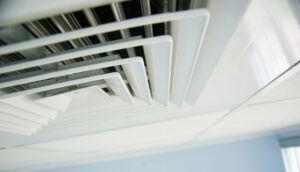The future of ventilation fortunately remains a hot topic, especially when highlighted by anti-Covid measures. See these excellent visualizations from El Pais to see how important (fine) aerosol spread can be.
Cath Noakes, Professor of Environmental Engineering for Buildings at the University of Leeds, recently gave a seminar on the Future of Ventilation (it starts at about 2 min:30 sec).
 Some of the (general) points I took away were:
Some of the (general) points I took away were:
- There is no evidence of outbreaks in well ventilated spaces
- Improving ventilation as a mitigation is ‘forever’: i.e. it doesn’t rely on changing human behaviour
- Personal ventilation rate metrics (e.g. litres/second/person) are preferable to impersonal (e.g. air change/hour)
- CO2 is an excellent proxy measure for ventilation
- We should aim for 10 litres/second/person, and maximum 800 ppm CO2
- Good ventilation is not only good for Covid19 mitigation, but also for good health and well-being
- It is much easier demonstrate energy efficiency than well-being and this is one of the reasons that the pendulum may have swung too far towards energy conservation and away from good ventilation.
In the more relaxed, interview-style conversation on The Life Scientific (available to those who can download BBC content), Professor Noakes made the point that ‘just because you’re not near a window doesn’t mean that you’ve got poor ventilation – many buildings are very well mechanically ventilated’. That message needs to be understood to avoid an ignorant backlash against all HVAC.
And don’t forget: an HVAC system needs to be clean to run properly!